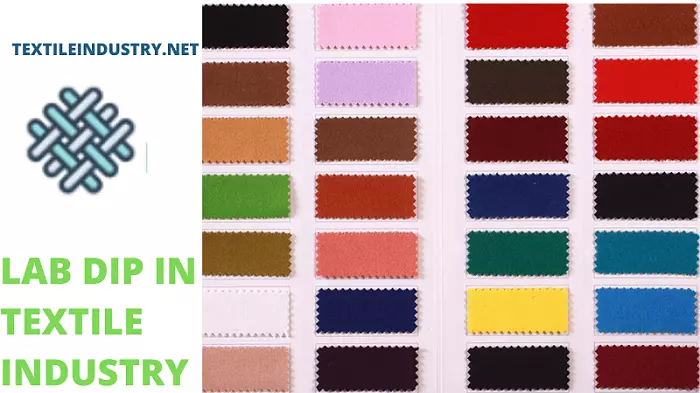Lab dip refers to producing a small sample for a textile or fabric that will be used to produce a garment or other textile product. The lab dip is created by a textile dyeing mill or dye house and is used to match the wanted color specified by the buyer. Lab dip is a dyed fabric or yarn swatch prepared for color approval. The process is used for the textile dyeing lab. In this case, the buyer sends the dyed sample and asks the vendor to dye it in their lab for an exact match. Dyeing lab dye accordingly to match the buyer’s sample and check with Pantone under the appropriate lightbox. The objective of lab dip is to check the vendor’s capability of shade matching. This gives full confidence in buyers/customers to place bulk orders.

What is Lab dip in Textile Industry?
Lab dip is a very important fabric swatch for merchandisers. Lap dip is the specimen of dyed fabric or yarns prepared for color approval. Lap dip is the initial stage of bulk fabric development. It is the representation of color approval. Usually, buyers send a small swatch to the merchandiser for color approval. A merchandiser develops color lab dip from a fabric mill. According to the lab dip go to bulk production. With lap dip, a merchandiser cannot approve the bulk production. The lap dip color verifies by the lighting box. Sometimes buyers give to supplier panton & color standards to match. Lab dip is the cutting swatch of the original. In the garments sector, generally, it is made by a 6X6 swatch. Lab dip submission form depends on the buyer to buyer.
Lab dip Submission and Approval Process in Textile Dyeing Mill
At first, the buyer sends the dyed fabric or yarn sample to a textile dyeing factory. The dyeing process arranges in the lab. Before that dye formulation and dye selection are to be done. Then the industry dye fabrics, follow the shade, and check. If the lab dip matches the customer’s watch, we can send it to the buyer. Buyer review to lab dip before approving. Buyer approval allows a vendor to go for Production with an approved sample and recipe sent to the production section from the lab.


